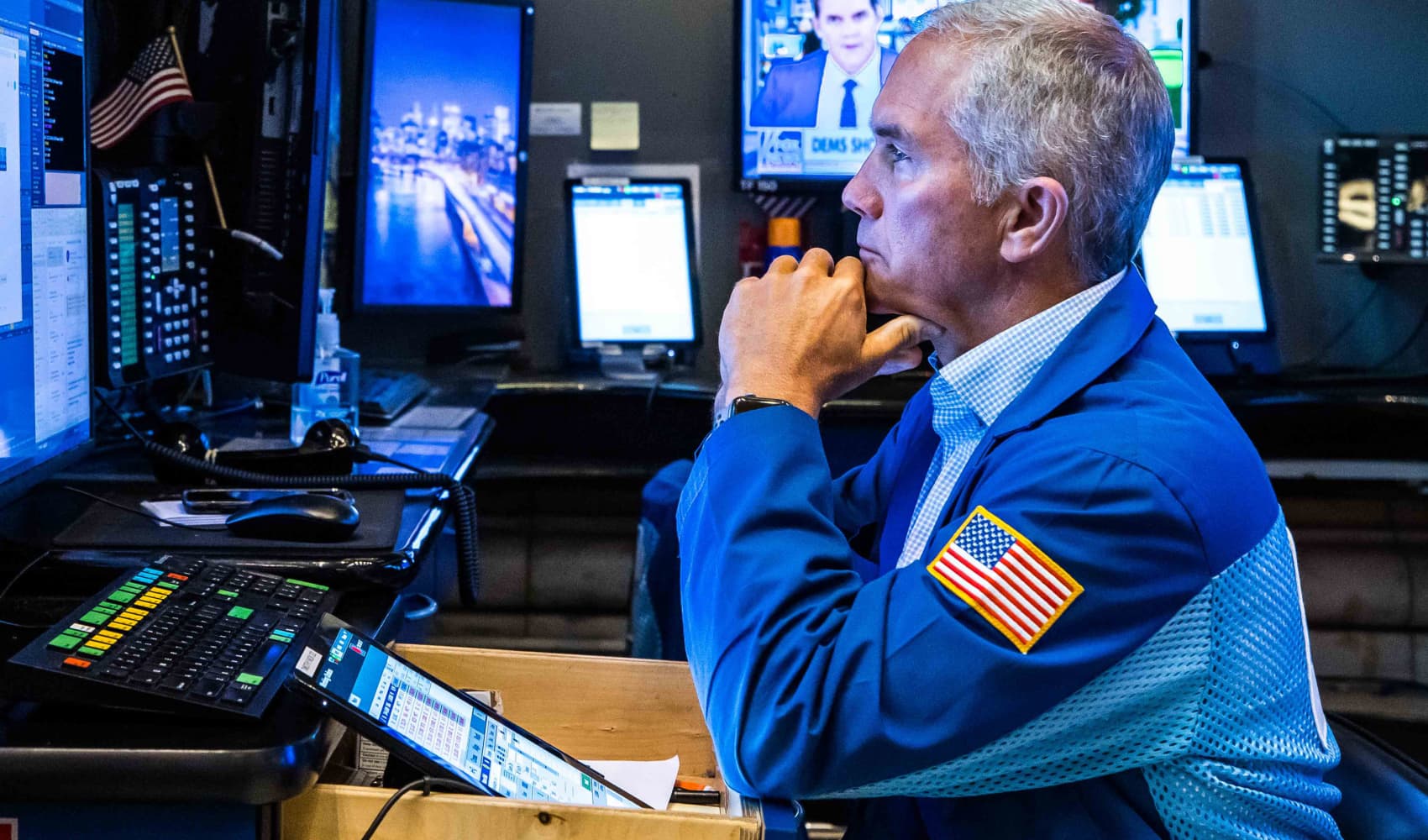Stock Market Monday: 5 Tips for Savvy Investors
Navigate Monday's Market: 5 Things Every Investor Must Know
Get Ready for Monday: A Trader's Briefing
Alright, investors, weekend's over and it's time to get back in the game. But before you dive headfirst into Monday's trading session, let's take a quick pit stop. Consider this your pre-market prep talk – the essential intel you need to start your week informed and ready to react. This isn't about predicting the future (because, let's be honest, nobody can), but about understanding the key factors that could influence the market's mood on Monday. So, grab your coffee, settle in, and let's get down to business!
1. Futures Feeling Faint: A Weekend Recap
The Dip Before the Dive?
U.S. stock futures are showing a bit of weakness as we head into Monday's open. Now, before you start hitting the panic button, remember context is king. Equities have been on a tear lately, fueled by…well, a lot of things. A little cooling off isn't necessarily a bad sign. It could just be the market taking a breather after a strong run.
S&P's Streak: Can it Continue?
Speaking of strong runs, the S&P 500 managed to snag a nine-day winning streak, its longest since 2004! That's like winning nine games in a row in baseball – impressive, right? But, much like baseball, streaks don't last forever. Will Monday be the day the streak ends? Keep an eye on the early trading activity. Early volatility will be a key indicator of the market's direction.
2. Succession at Berkshire: Buffett's Heir Apparent
The End of an Era, or Just a New Chapter?
Big news from the Oracle of Omaha himself. Berkshire Hathaway's board has voted to replace Warren Buffett as CEO with Greg Abel, Berkshire's vice chairman of non-insurance operations. This is a HUGE deal, like the changing of the guard at Buckingham Palace. Buffett, however, remains Chairman, so don't expect him to disappear entirely. Think of it as a strategic transition, not a complete departure.
Who is Greg Abel?
So, who exactly is Greg Abel? He's been a key player at Berkshire for years, overseeing the company's non-insurance operations. Many consider him a brilliant operator. The big question: will he maintain Buffett's value investing philosophy, or will he bring a fresh approach to Berkshire's strategy? This leadership change will be closely watched by investors for years to come.
3. Tariffs as a Tactic: Retailers' Race Against Time
Buy Now, Before the Price Hike!
Retailers are getting creative with their marketing strategies, and tariffs are now part of the equation. They're essentially using the threat of higher prices (due to tariffs) to encourage consumers to buy now. Think of it as a limited-time offer with a looming deadline – "Buy before the tariffs hit!"
Scarcity Marketing in Action
This tactic also plays on the fear of potential shortages. "Buy now, before it's gone!" It's classic scarcity marketing. But is it effective? That's the million-dollar question. Look for retailers to highlight these "tariff deals" in their advertising. Pay attention to consumer response – are people actually buying into it?
4. Economic Data on the Horizon: Watch Out for Volatility!
The Numbers Game
Keep your eyes peeled for upcoming economic data releases. Inflation numbers, GDP figures, and employment reports can all have a significant impact on the market. These data points are like economic tea leaves – they can give you clues about the health of the overall economy.
Prepare for Potential Shocks
Unexpectedly strong or weak economic data can trigger significant market volatility. Be prepared for potential price swings, and don't make rash decisions based on knee-jerk reactions. Have a plan, and stick to it!
5. Geopolitical Tensions: The Unknown Variable
The World Stage
Geopolitical events can also throw a wrench into the market's gears. Tensions in certain regions, trade disputes, and political instability can all create uncertainty and volatility. It's like trying to predict the weather – you can make educated guesses, but you can never be entirely sure what's going to happen.
Stay Informed, Stay Flexible
Stay informed about global events, and be prepared to adjust your investment strategy if necessary. Don't ignore the headlines, but don't overreact either. A balanced approach is key.
Analyzing the Initial Stock Futures Movement
Interpreting Early Market Signals
The stock market's initial movement can provide valuable insights into the day's overall trend. Are futures indicating a positive start, or are they signaling potential turbulence? Analyzing these early signals can help investors make more informed decisions. Remember, early trends aren't always indicative of the entire day, but they can certainly set the tone.
Factors Influencing Futures Volatility
Several factors can influence the volatility of stock futures, including overnight news, economic data releases, and global market sentiment. Understanding these factors can help investors anticipate potential market fluctuations and adjust their trading strategies accordingly. Being prepared for volatility can significantly reduce the risk of making impulsive decisions.
Understanding the Impact of Leadership Transitions on Stock Performance
Historical Trends of CEO Changes
History offers valuable lessons when analyzing leadership transitions. Looking at how stocks have performed after similar CEO changes in the past can provide insights into potential future performance. However, remember that past performance doesn't guarantee future success; each situation is unique.
The Role of Investor Confidence in CEO Succession
Investor confidence is crucial during a CEO transition. A well-communicated succession plan can boost investor confidence and help stabilize the stock price. Conversely, uncertainty can lead to increased volatility. Keeping a close watch on investor sentiment can help gauge the market's reaction to the leadership change.
Examining the Effectiveness of Tariff-Based Marketing Campaigns
Consumer Behavior and Tariff Awareness
Understanding how consumers respond to tariff-based marketing campaigns is essential for evaluating their effectiveness. Are consumers actually motivated to buy products before tariffs take effect, or are they resistant to this marketing tactic? Analyzing consumer behavior can reveal the true impact of these campaigns.
Retailers' Profit Margins Under Tariff Pressures
While retailers may attract customers with tariff-based promotions, it's essential to examine how these campaigns affect their profit margins. Are they sacrificing profits to maintain sales volume? A closer look at retailers' financial statements can reveal the long-term sustainability of this marketing approach.
Monitoring Global Economic Indicators and Their Influence on Market Trends
The Significance of Inflation Rates
Inflation rates play a critical role in shaping market trends. High inflation can erode consumer purchasing power and lead to economic slowdown. Conversely, low inflation can signal weak demand. Monitoring inflation rates is essential for understanding the overall health of the economy.
Analyzing GDP Growth and Employment Figures
GDP growth and employment figures are key indicators of economic prosperity. Strong GDP growth typically leads to increased corporate earnings and higher stock prices. Similarly, low unemployment rates suggest a healthy labor market. Keeping a close watch on these indicators can help investors make informed decisions.
Assessing the Impact of Geopolitical Risks on Investment Strategies
Identifying Key Geopolitical Hotspots
Certain regions around the world are more prone to geopolitical tensions than others. Identifying these hotspots can help investors assess the potential risks to their portfolios. Staying informed about global events can help anticipate potential market disruptions.
Diversifying Investments to Mitigate Geopolitical Risks
Diversification is a crucial strategy for mitigating geopolitical risks. By spreading investments across different asset classes and geographic regions, investors can reduce their exposure to any single event. A well-diversified portfolio is better equipped to weather geopolitical storms.
Conclusion: Stay Informed, Stay Prepared
So, there you have it – five key things to keep in mind as you head into Monday's trading session. Remember, the market is a dynamic and ever-changing landscape. Staying informed, staying prepared, and staying flexible are essential for success. Good luck, and happy trading!
Frequently Asked Questions (FAQs)
1. How much of my portfolio should I allocate to defensive stocks in a volatile market?
That depends entirely on your risk tolerance and investment goals. If you're risk-averse, you might allocate a larger portion (e.g., 50-70%) to defensive stocks. More aggressive investors might allocate less (e.g., 20-30%). Always consider your personal circumstances before making any investment decisions.
2. What is the best strategy for dealing with unexpected market corrections?
Don't panic! A well-diversified portfolio can help cushion the blow. Consider rebalancing your portfolio to maintain your desired asset allocation. Also, avoid making emotional decisions based on fear or greed. Stick to your long-term investment plan.
3. How can I stay updated on breaking economic news and its potential impact on the market?
Subscribe to reputable financial news sources, follow financial analysts on social media, and set up alerts for key economic data releases. Staying informed is crucial for making timely and informed investment decisions.
4. What are some reliable resources for researching individual stocks and their potential?
Utilize financial data providers like Bloomberg or Reuters, analyze company financial statements (10-K and 10-Q filings), and read analyst reports. Be sure to consult multiple sources and do your own due diligence before investing. Independent research is essential for making informed investment decisions.
5. How does the Federal Reserve's monetary policy affect the stock market, and what should I watch for?
The Federal Reserve's monetary policy, specifically interest rate adjustments, can significantly impact the stock market. Lower interest rates typically stimulate economic growth and boost stock prices, while higher interest rates can have the opposite effect. Pay attention to Fed announcements and monitor economic indicators for clues about future policy changes.



